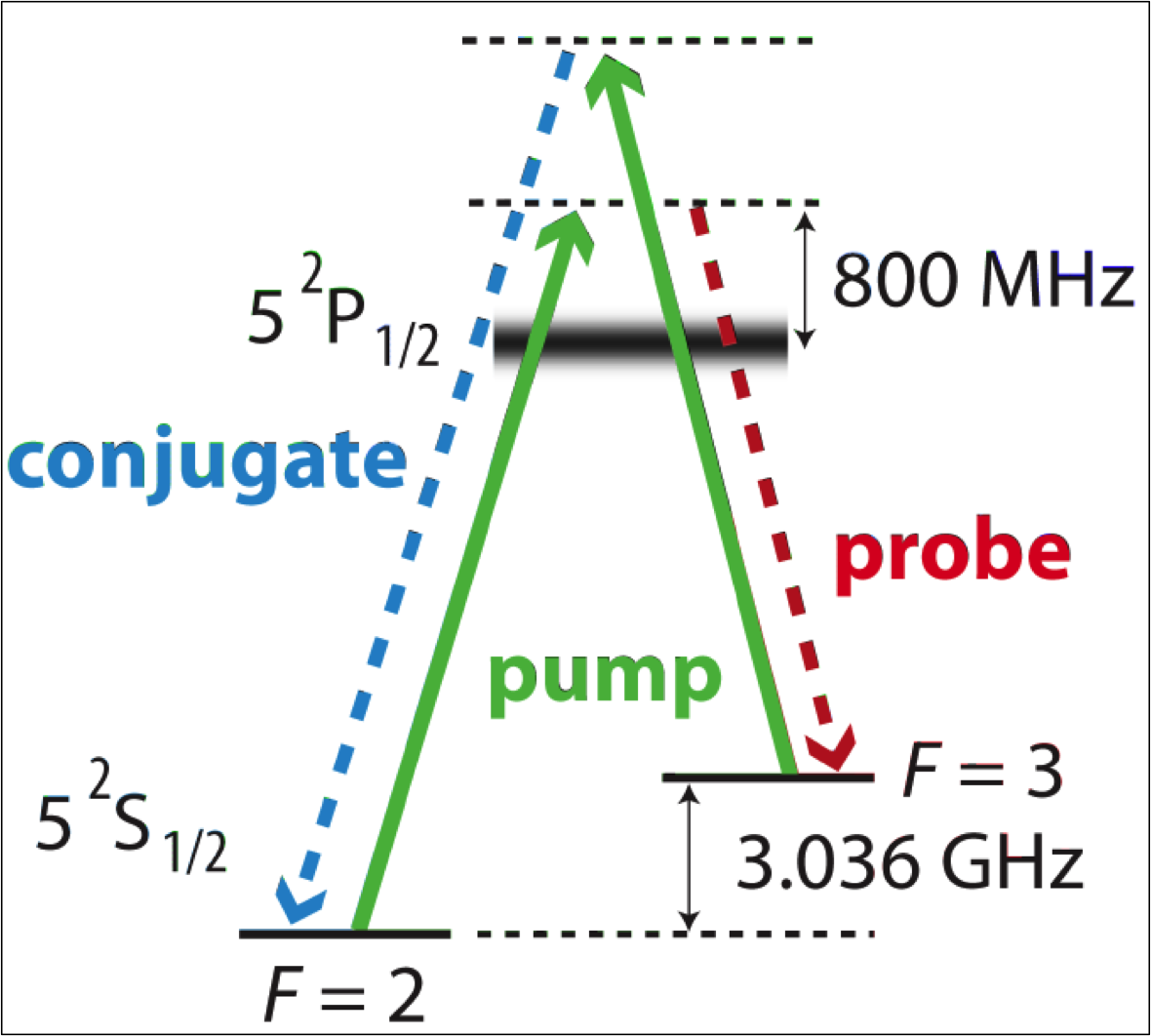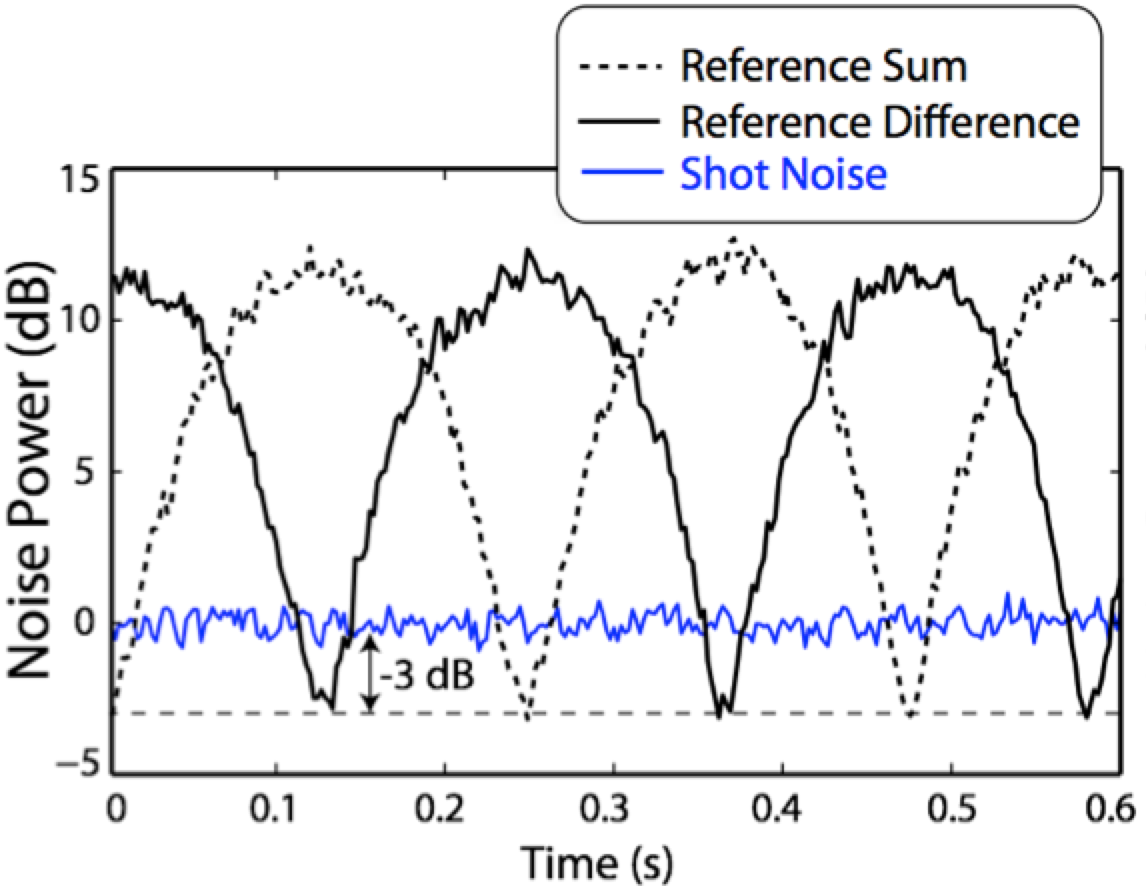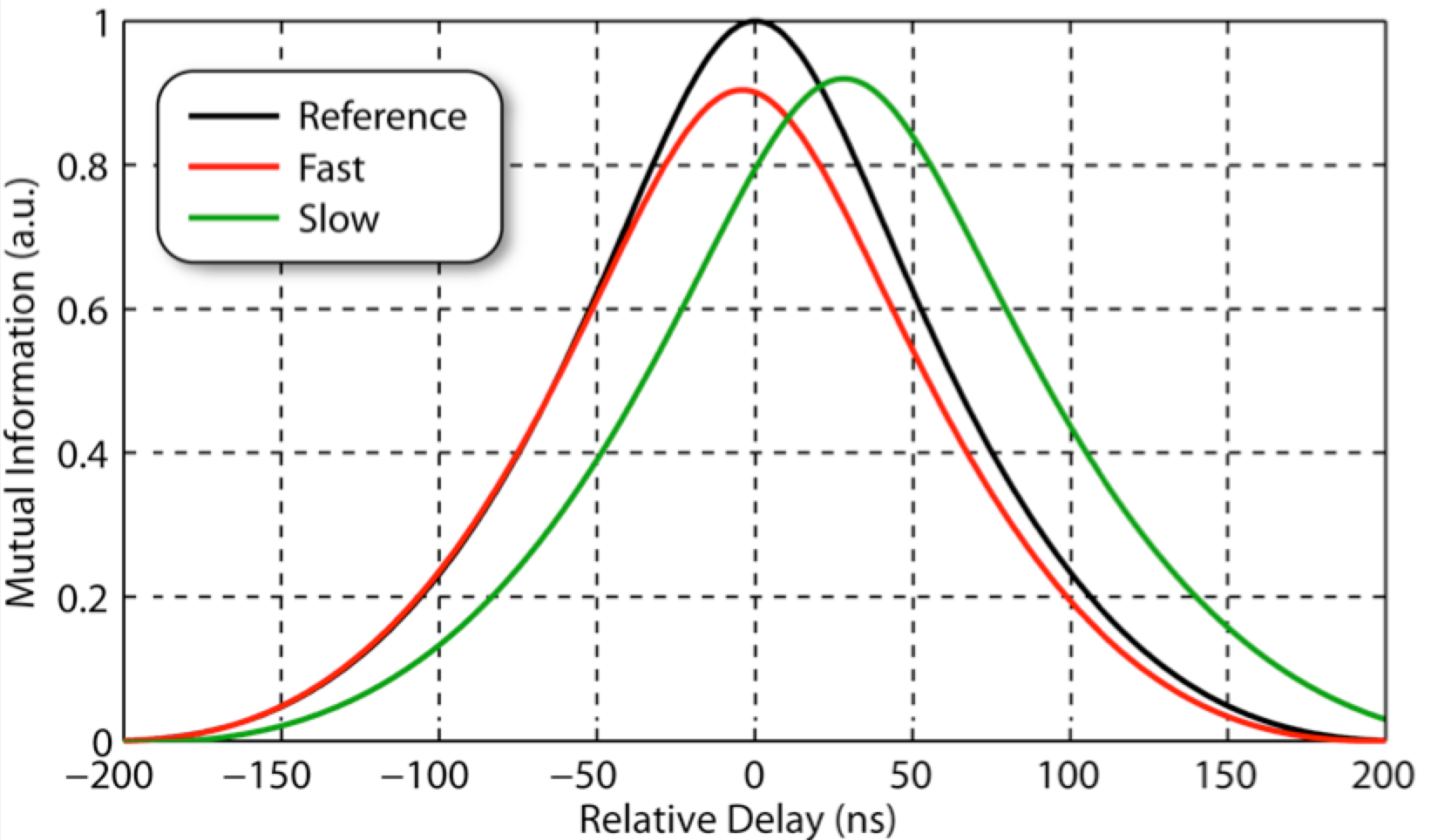Research
This page is pretty outdated (as of 2020, 2021). Please visit the Home and Publications pages for up-to-date information about our research. The People and News pages are fairly up-to-date too!
Making use of a nonlinear four-wave mixing process in warm atomic vapor, our group investigates various nonlinear and quantum optical phenomena. The four-wave mixing process effectively annihilates pairs of photons, while simultaneously generating a new pair of photons at slightly different frequencies.

The photons created via the four-wave mixing process are highly correlated in multiple degrees-of-freedom. When the process is seeded with a laser at one of the probe or conjugate frequencies, bright "twin beams" are created. One can then, for example, take the intensity-difference between the two generated beams which results in a noise power that is lower than allowed by classical physics.
If the process is unseeded, two-mode squeezed vacuum is generated in the output probe and conjugate modes. These modes again exhibit strong correlations, again in various degrees-of-freedom. Typically, one shows that the state consisting of the two output modes is entangled by measuring the joint-quadratures of the modes. When simultaneously measuring the amplitude-sum and phase-difference quadratures, if their phase-dependent noises both drop below the classical (shot-noise) limit, the state is entangled.

One nice aspect of the system is that the output entangled modes are multi-spatial in nature. This allows the process to support images, or to allow for spatial multiplexing in various applications.

The four-wave mixing system acts as a frequency-dependent gain for both the probe and conjugate modes. As such, dispersive features are present. This allows for the investigation of how entanglement and other quantum information measures behave when subject to either slow- or fast-light media.
